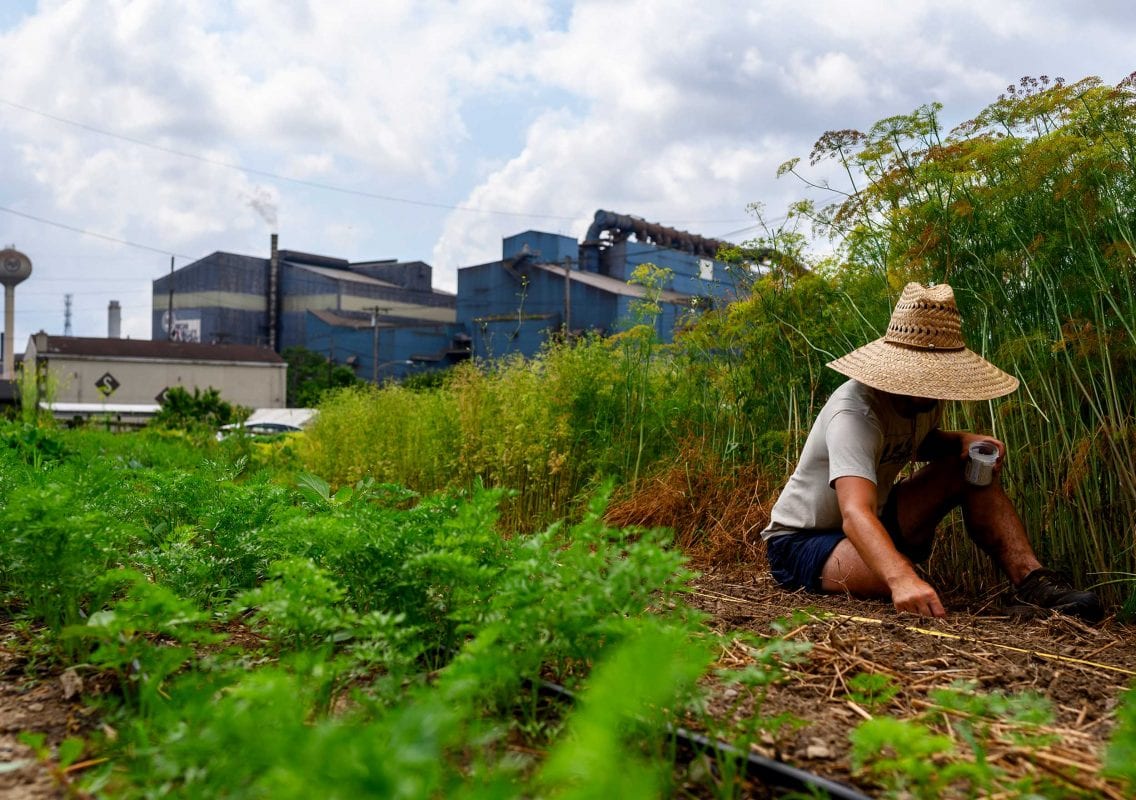
Adam Holley plants carrot seeds at Braddock Farms in Braddock.

Adam Holley plants carrot seeds at Braddock Farms in Braddock.
Story by Kimberly Palmiero // Photos by Jeff Swensen
The red door beckons people to come inside Carl Lewis’ patch of a store along Fifth Avenue in Rankin, where he speaks the praises of grapes, apples, and avocados.
Here in this small town along the Monongahela River, about eight miles east of Pittsburgh in the Mon Valley, the nearest full grocery store is more than a mile away. With his sing-song voice and warm smile, Lewis greets customers and talks produce with people who otherwise might not be able to regularly get it.
He started carrying limited quantities of fresh fruits and vegetables a few years ago, spurred by a grant from Just Harvest, a nonprofit based in Pittsburgh.
“It just went gangbusters,” said Lewis, 46, of the demand his business saw. “Now, I hear a lot of the kids educating their parents about fruits and vegetables. Kids are actually coming in and opting for fruit. So that’s a great feeling.”
Backyard gardens and produce markets are abundant in summer and fall, yet millions of Americans lack ready access to fresh fruits and vegetables, particularly in impoverished or rural areas where convenience stores are the closest or only practical option.
And some nonprofits nationwide are putting greater resources into making produce available to people who aren’t able to shop in a full-service store by increasing availability through mom-and-pop stores like Carl’s, redirecting “rescued” produce, or through farmers’ markets.
How many people lack access to a full grocery store? Reports vary but the U. S. Department of Agriculture found that in 2017 nearly 12 percent or about 150 million households were “food insecure” at some point that year, down slightly from the year prior.
That lack of access affects health and medical costs. A University of Kentucky study released last year showed that people who got fresh fruit and vegetables through a weekly program experienced a drop in diet-related medical costs.
A patchwork of nonprofits and community groups is leveraging technology and in some cases working directly with farmers to bring more produce to the people.
In Pittsburgh, besides Just Harvest’s Fresh Corners program, there are 412 Food Rescue, the Greater Pittsburgh Community Food Bank and a nonprofit grocery store, Produce Marketplace in Clairton.
“Kids are actually coming in and opting for fruit. So that’s a great feeling.”
~
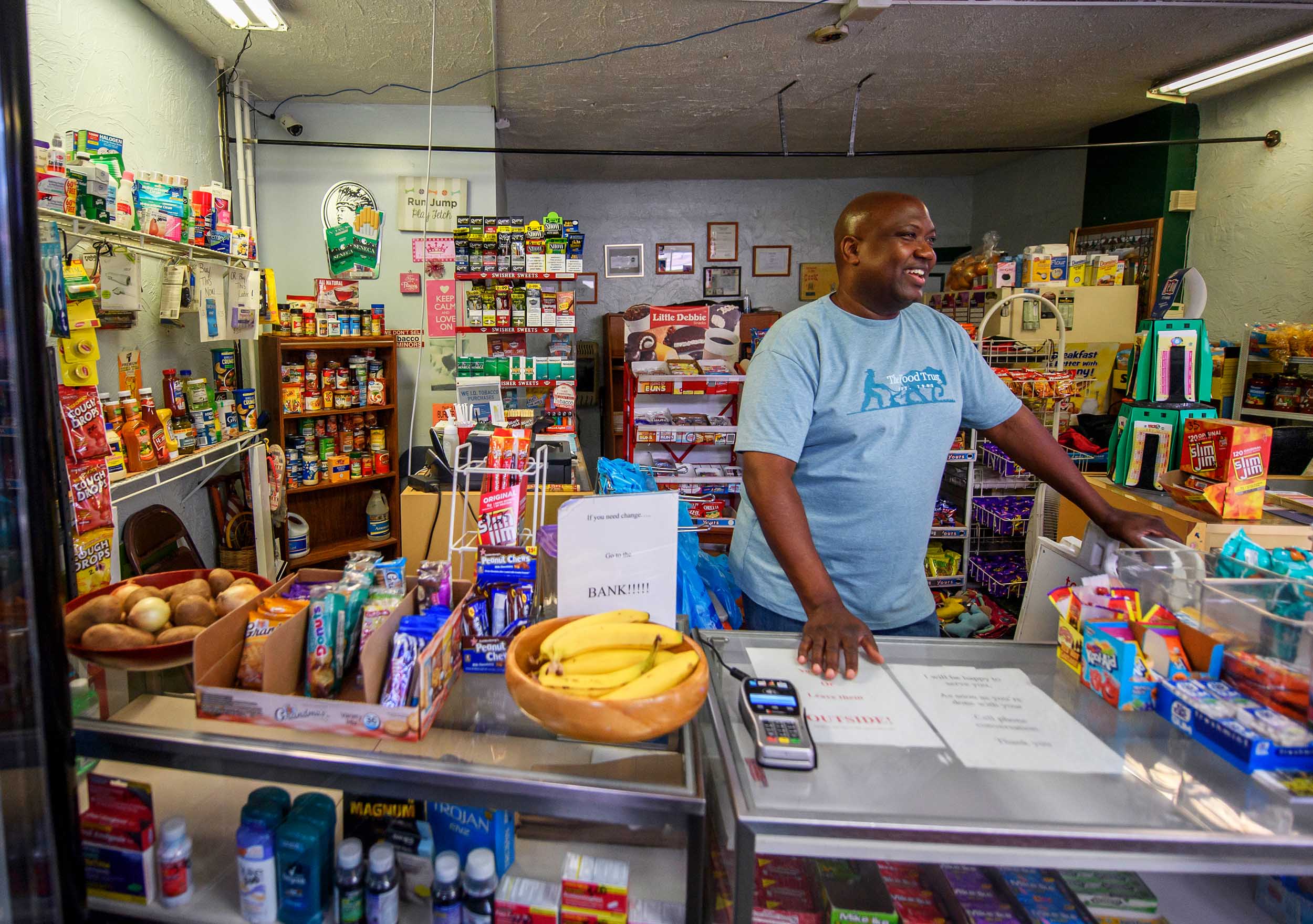
Carl Lewis behind the counter at his store, Carl’s Cafe, in Rankin.
In other postindustrial areas such as Wheeling, W.Va., Grow Ohio Valley works to make produce more accessible through planting gardens. In Louisville, Ky., New Roots works with farmers to bring produce to those in urban and rural areas. In Ohio, the Greater Cleveland Food Bank, last year distributed more than 21 million pounds of produce, an increase of a couple of million pounds over the year prior. A smaller organization, Baba’s Yard, gets produce from the food bank.
For Baba’s Yard clients, economic factors play a bigger role than access, said John Visnauskas, founding director. They serve families in the Ohio communities of Brooklyn and Parma.
“There is access to produce but if you are trying to stretch your dollar, a bag of apples, a bag of potatoes, it’s really a luxury,” he said.
Greater Cleveland Food Bank annually provides food for about 300,000 people in six northeast Ohio counties.
“We still get the can of soup, or boxed food, but we are doing so much more. Produce is a big piece of what we do now,” said Karen Ponza, the food bank’s communications and events director. “It’s the evolution of food banking over the years.”
Farther south, New Roots operates nine locations in Kentucky for its Fresh Stop Markets — biweekly pop-ups in areas where people struggle with access to stores.
“We like to think of ourselves as a movement rather than a program,” said Karyn Moskowitz, executive director of New Roots and Fresh Stop Markets. “Years ago it occurred to us why do people have to struggle and buy their food from a program and everyone else can buy their food from a market?”
New Roots works with local farmers to project demand for the upcoming season, so what’s distributed boosts the farmers’ bottom lines as well.
Through New Roots, there are seven markets in metro Louisville, and two in rural Hazard and Brandenburg. New Roots received a federal grant that enables its leaders to travel, and give talks and bring others in to see their program.
“Our big dream is to spread our model across the country,” Moskowitz said.
Back in Rankin, Lewis had help establishing the produce program at his business, Carl’s Cafe, through a $1,500 grant from Fresh Corners, a program of Pittsburgh-based Just Harvest.
Carl’s sits along a busy thoroughfare in Rankin, where about 31 percent of families live below the poverty level. The nearest Giant Eagle supermarket is about a mile away — not far, really, but far enough to be inconvenient if you don’t drive, or can’t go far due to poverty, illness, or age.
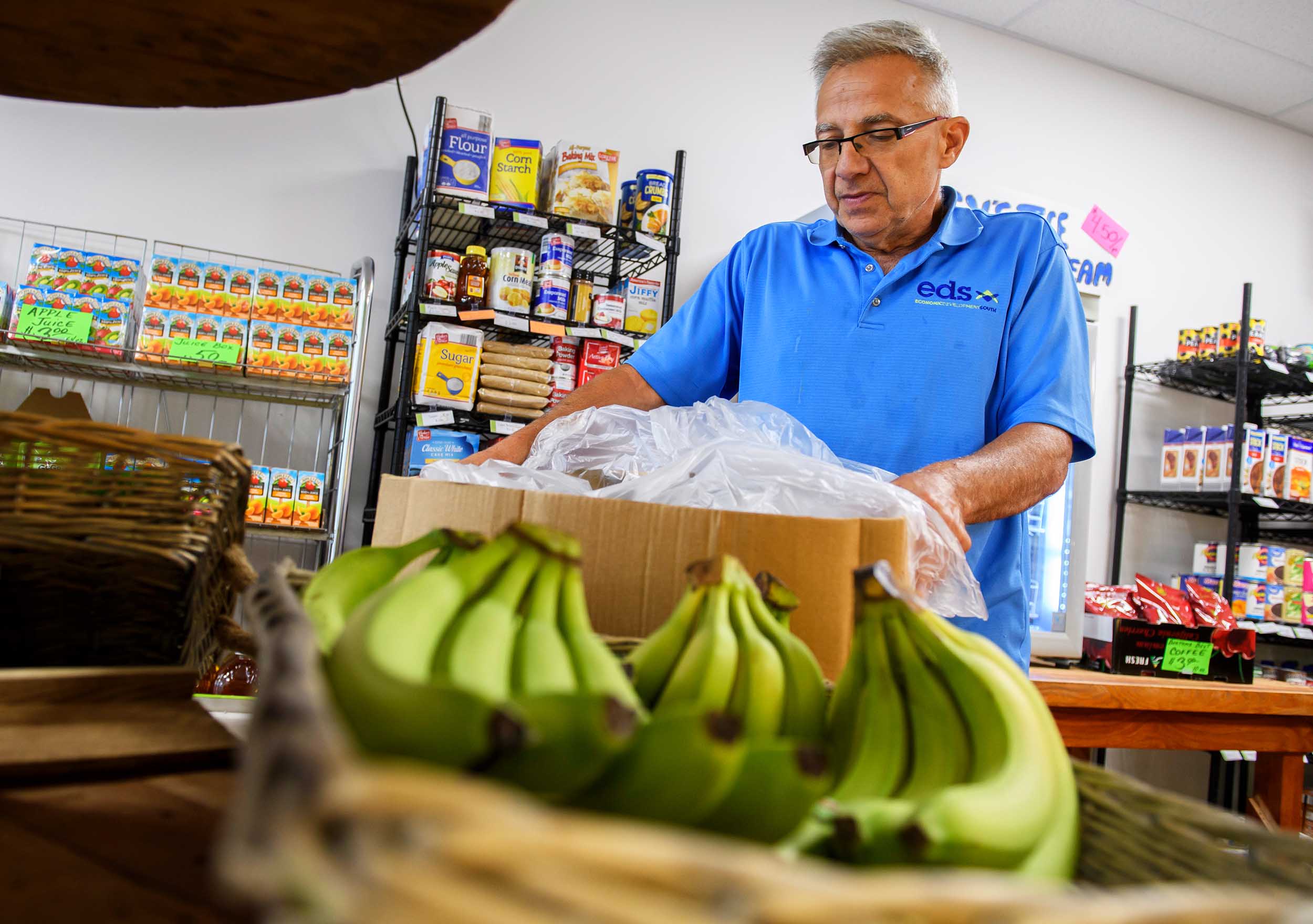
Felix Fusco at the Produce Market in Clairton.
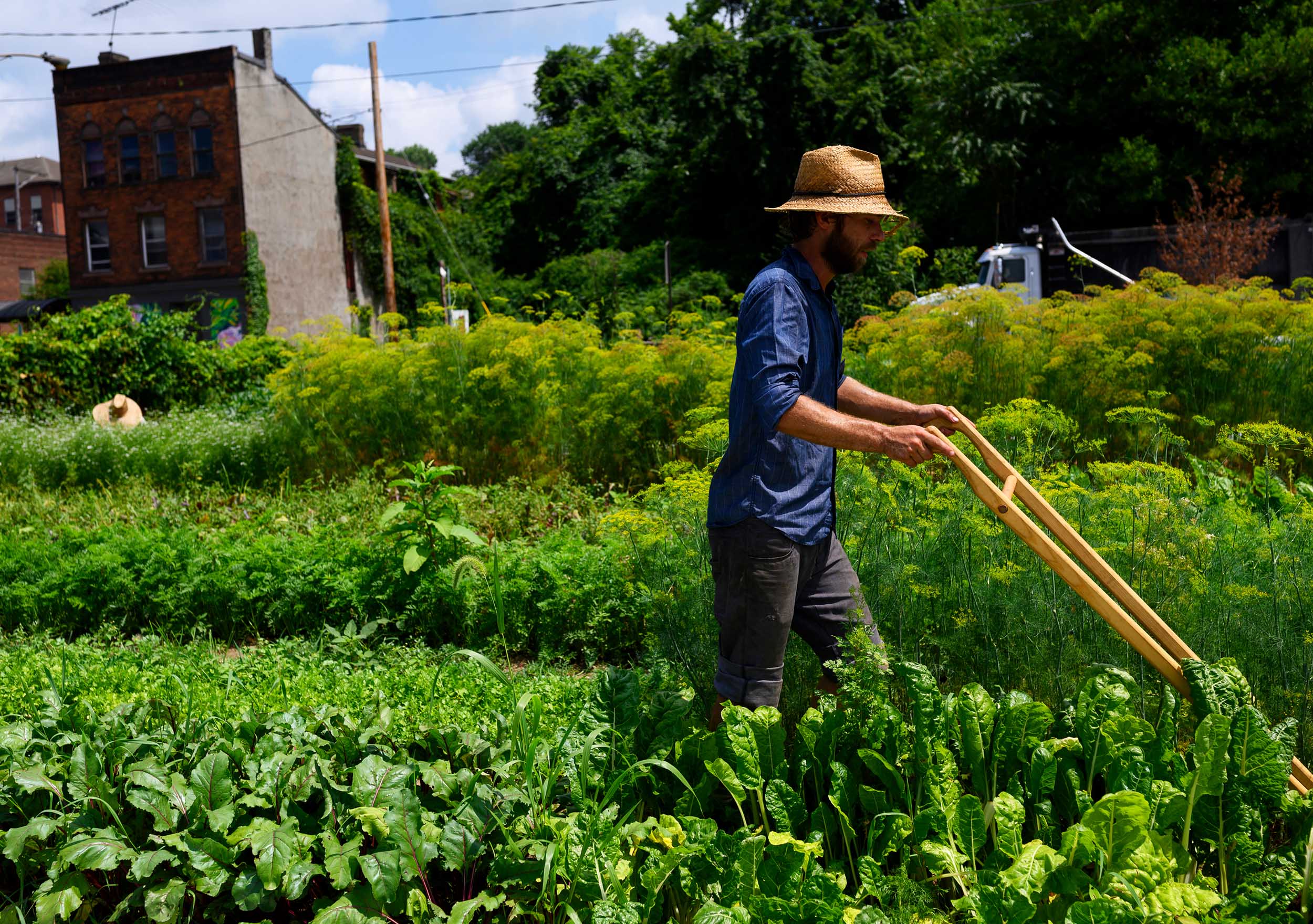
Nick Lubecki cultivates rows of vegetables at Braddock Farms, which is part of Grow Pittsburgh, a nonprofit that works to increase access to fresh food. Some produce in Lewis' store comes from Braddock Farms.
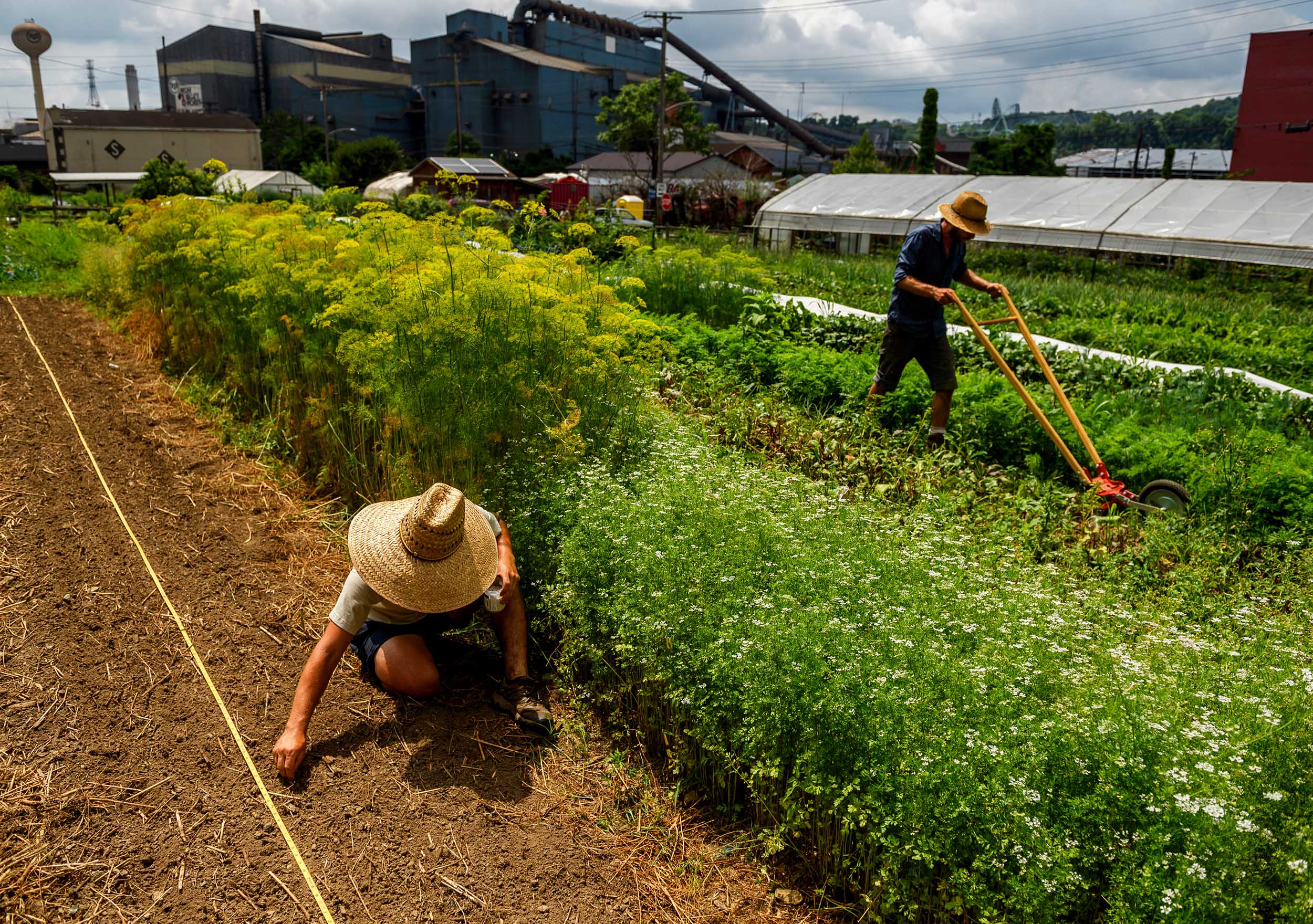
Grow Pittsburgh’s Braddock Farms beside the USX Plant.
“There is access to produce but if you are trying to stretch your dollar, a bag of apples, a bag of potatoes, it’s really a luxury.”
~
The Fresh Corners program helps fund start-up costs of bringing produce to stores in impoverished areas where access to a full grocery store is lacking, or difficult. There are 10 stores participating, said Kristen Hochreiter, Fresh Corners project coordinator.
“So sometimes it’s changing eating habits but sometimes it’s knowing what your customers want,” she said. “An unofficial requirement of the program is that they know the customers and they are going to do promotion and they are going to talk about it and it gets people excited. And a lot do, they really believe in this.”
Lewis then began participating in another program through The Food Trust, based in Philadelphia, that encourages SNAP recipients to use their benefits to buy produce by allowing them to “earn back” $2 for produce for every $5 spent. Several other states, including Michigan, have similar incentives.
Last year, Lewis took it one step further, offering weekly nutrition classes with cooking demonstrations and recipes. He helped teach participants how to make avocado toast, smoothies, sauteed eggplant, and more.
“The week we made cowboy caviar you would have thought we made Beluga caviar,” he said. “We took beans and mixed in whole kernel corn. People loved it.”
Lewis said he’s seen purchasing patterns change. Before he started carrying produce, he said, one woman only ever bought cigarettes in his store.
“Today she comes in and buys avocados,” he said.
Another customer buys several green peppers per week. Still another buys cabbage for her cabbage rolls.
Smoothies caught on, too.
“We are like the smoothie capital of the world now,” Lewis said, laughing. “Everybody makes them. Kids even developed their own recipe. I couldn’t figure out why all my apples kept disappearing. The kids were making smoothies with them.”
Lewis is now a board member at Just Harvest and has accepted a part-time job as an outreach associate with The Food Trust.
He admits that offering produce from his small storefront takes commitment.
“I run myself ragged looking for good produce,” Lewis said. “But I wouldn’t trade it.”

Kimberly Palmiero is CEO and Editor-in-Chief of Postindustrial. She also is a senior editor for iGeneration Youth and immediate past president of the nonprofit Press Club of Western Pennsylvania. A small business owner, she also was a managing editor for Trib Total Media. She is based in Pittsburgh.

Jeff Swensen is a Pittsburgh-based photojournalist and a founding member of American Reportage. His work appears regularly in The New York Times, The Washington Post, and The Wall Street Journal.